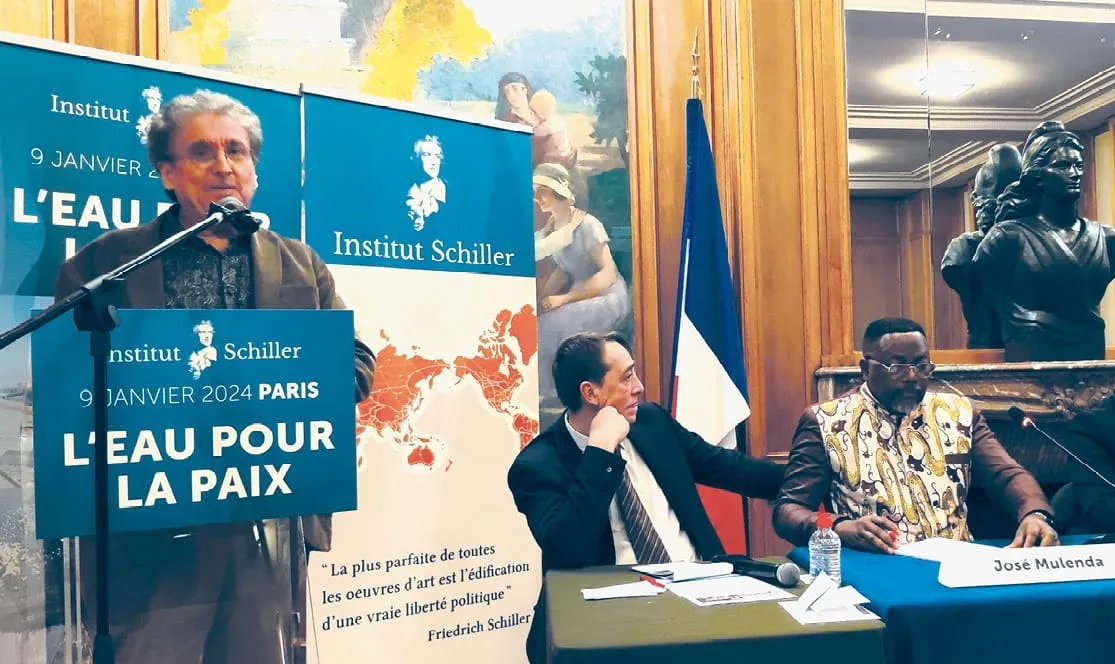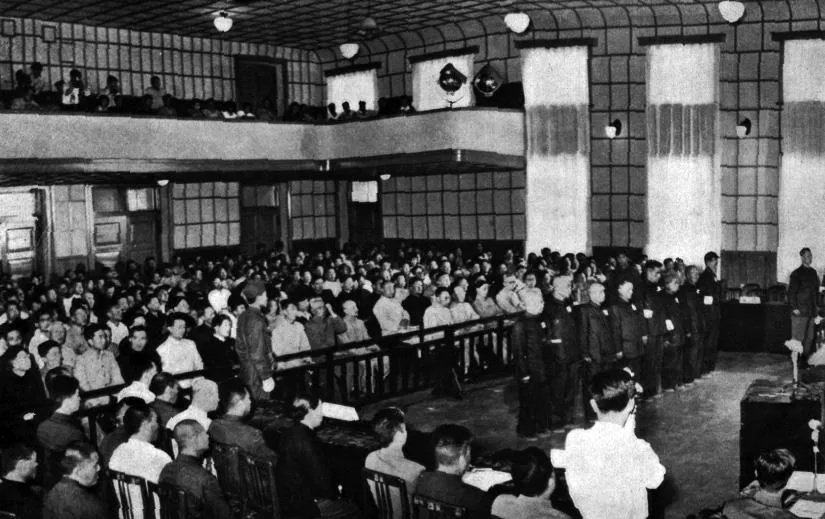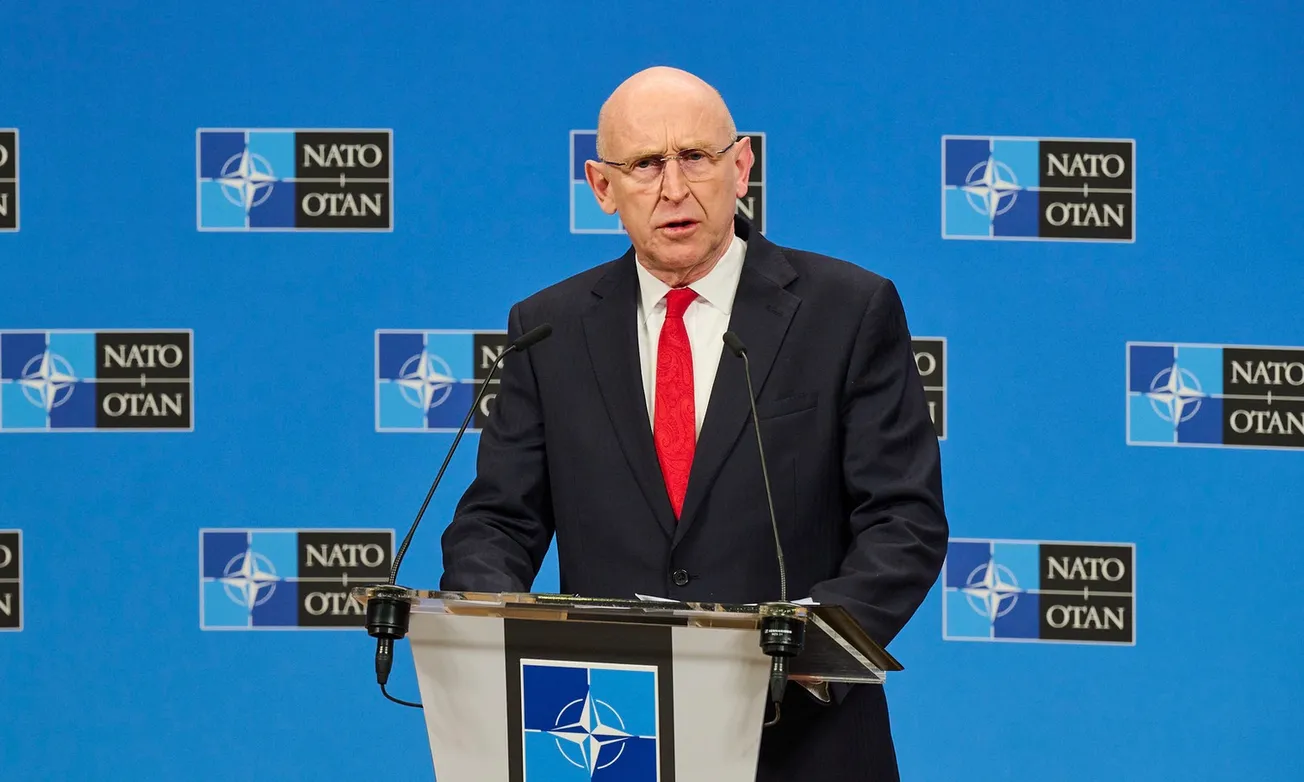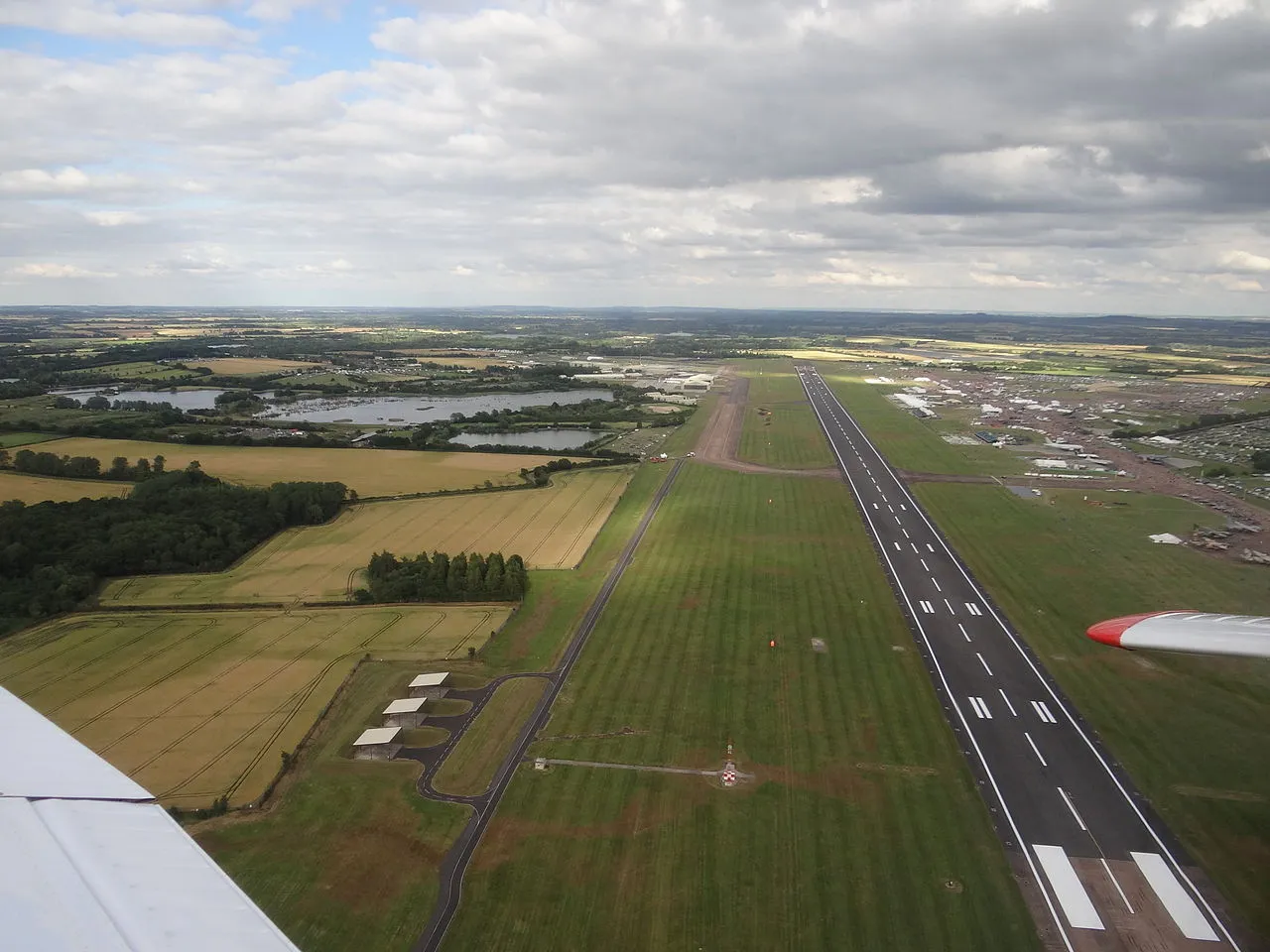In a packed room in Paris, twelve speakers, including seven experts from think tanks and public and private associations, addressed a passionate audience which included representatives from embassies in Central Asia, Africa, and South America. All spoke of how water, all too often used as a tool in many conflicts, is par excellence one of the main vectors of a policy of peace and mutual development.
Indeed, the particularly grave situation facing the world today—starting with Ukraine and the Middle East—where the risk of a drift toward world war cannot be ruled out, makes peace the subject that must be at the center of all concerns.
The Schiller Institute’s Jan. 9 conference put this squarely on the table—water is a major lever for anyone serious about peace. However, water will only be an instrument of peace if we cease to regard it as a scarce resource to be allocated according to arbitrary criteria.
This was the aim: to provide a positive vision of a subject that encompasses so many vital issues. Above all, it was to reassure people that, no, there is no need to adapt to a supposed scarcity; and yes, it is urgent to do everything possible to build adequate infrastructure wherever it is lacking. Rather, access to water—like access to energy or access to food—is an eminently strategic issue; its technical dimension, however important, is ultimately only secondary.
However, it was essential to place this issue in the very concrete context of the current tragic situation in the Middle East, with the knowledge that, even if the causes of the horror unfolding before our eyes cannot be reduced to the problem of water alone, it undeniably plays a decisive role.
Southwest Asia is one of the regions of the world that illustrates how natural conditions can pose considerable challenges, but it is also an example of how the inability to act, or lack of will, can lead to disaster. This was demonstrated from the beginning of the first session with a presentation on the Middle East, highlighting Lyndon LaRouche’s insistence on the crucial role of water in any genuine peace process, as he presented in his “Oasis Plan for the Middle East” back in 1975. LaRouche’s aim was to avert the danger of war, which a lack of water could only fuel in a region already plagued by bloody conflicts.
Indeed, isn’t it paradoxical that this region of the world, once known as the “Fertile Crescent,” is today emblematic of systemic drought? Of course, geography and climatic changes have played a decisive role. However, it is worth asking how ancient societies, with only rudimentary technical means at their disposal, managed to transform desert areas into fruit- and vegetable-producing gardens; how our ancestors knew how to put water at the service of all; how ancient civilizations managed to develop particularly efficient water conveyance systems?
Water is also an issue in terms of transportation and storage. Canals have shaped the physical and economic geography of our countries since time immemorial. More recently, dams have completed the range of hydraulic infrastructures without which no civilization can flourish. Here again, the question of political will is absolutely crucial, as illustrated by the case of the Three Gorges Dam in China. An ambitious project that was difficult to implement and met with strong resistance, the Three Gorges Dam is now proving so important that the authorities are planning to widen the sluices of the gigantic five-tier staircase of locks that allow ships to transit.
Dams, like canals, are among the infrastructures targeted by radical environmentalists, quite wrongly so. But it’s important to recognize that certain infrastructures, when built without conceiving them in a living relation with their environment, can create problems—which then have to be corrected—as in the case of the new Rhine River route designed by German engineer Johan Gottfried Tulla.
In fact, the modern technologies we now have at our disposal enable us not only to work miracles, but also to have a positive impact on the environment. The case of Xinjiang, a region particularly affected by water shortages, and which today produces water-hungry fruit and vegetables, is a striking example. The immense potential represented by genuine land reclamation through the intelligent use of water is a source of optimism that consigns eco-anxiety to the shelf of infantile fears.
The second session gave other concrete examples of projects in two very different regions: one in Africa, the other in Afghanistan. In Africa’s Albertine Rift, where freshwater is in abundance, the challenge is to interconnect the Great Lakes. In Afghanistan, the digging of the Qosh Tepa canal, under difficult political conditions, appears to be the key to the stabilization and development of this country. This project cruelly highlights the difference of approach between Afghanistan and the countries of the Fertile Crescent. In Afghanistan, despite the hostility of the “international community,” a political agreement has been reached for this vital project; in Southwest Asia, the situation of almost permanent war, maintained by the same “international community,” every day washes away any real prospect of a peaceful solution.
Last but not least, the civilizational dimension of water is intimately linked to the carrying capacity of our societies. This is closely correlated with the density of energy flows available to said society. This is the principle, introduced by Lyndon LaRouche, of “Potential Relative Population Density.” But shouldn’t we also include water? If greater energy consumption per individual and greater energy flux density is the marker of any more developed, educated, and modern society, what about water?
Water is only a relative scarcity, since it is a renewable resource, and the main problem is its uneven distribution across the Earth’s surface. In addition, thanks to today’s advanced state of knowledge and cutting-edge technologies, we know that the amount of underground freshwater far exceeds that recorded on the surface.
Such a discovery, largely unknown to the general public, changes the whole picture and raises the political and cultural stakes. Will certain powers want to use water as a political instrument (for example, by starting to privatize it), to make it the ideal weapon of domination? Conversely, will we manage to reach an agreement in the name of the public interest? Aside from the genuine technical challenges to be met, there is nothing to prevent us from making water the preferred instrument of peace for the world.

Yves Paumier: Welcome from the Chairman
Yves Paumier, President of the Schiller Institute in France, opened the event by emphasizing that “water is life.” Despite this, recent events such as the floods in the Nord-Pas de Calais region, underline the need to properly manage this resource, which can otherwise be a force for damage and destruction. Paumier recalled that 63% of the human body is made up of water, and that every French person consumes the equivalent of twice his or her body weight in water every day [in terms of both direct physical consumption and production processes per capita such as irrigation for agriculture or energy generation—ed.]. Currently, the French government devotes 3.7% of its national budget to water:
If water and electricity development projects are the shortest route to peace, the absence of such projects has also led many empires to their demise, such as the Khmers, the Mayans, and Babylon with its famous Gardens.
FIRST SESSION
Odile Mojon:
The Oasis Plan, Key to Future Israeli-Palestinian Peace

Odile Mojon, editor-in-chief of the French Schiller Institute’s website, opened the session by addressing the central theme of the seminar, “Water, the key to peace.” Today, a third of the world’s population suffers from a drastic reduction in water resources, and according to international security institutions, water, even more than oil, “has become the primary source of conflict in the world.”
With the Israeli-Palestinian conflict, the Near and Middle East are at the heart of these risks. Ms. Mojon recalled that, in 1992, Israel’s Prime Minister Yitzhak Rabin declared: “If we solve all our problems in the Middle East, but not the sharing of water, our region will explode.” In 1975, following talks with the leaders of the Iraqi Ba’ath Party and the Israeli Labor Party, the American economist Lyndon LaRouche (1922-2019) came to precisely the same conclusion when he proposed his “Oasis Plan for the Middle East.”
But this plan, like other proposals along similar lines, was blocked on the Israeli side, and we know only too well what happened to Yitzhak Rabin, who was assassinated after signing the Oslo Accords, leading to the ousting of Shimon Peres and the demonization of Yasser Arafat.
Mr. LaRouche’s Oasis Plan included three major points:
1) Israel’s relinquishment of exclusive control over water resources;
2) economic development of the Gaza Strip;
3) construction of the Gulf of Aqaba-Dead Sea and Dead Sea-Mediterranean canals, going beyond the Peres plan which combined canals and tunnels to bring water through the mountain ranges between the Red Sea and the Dead Sea.
LaRouche also proposed the use of nuclear energy to generate the electricity needed for economic development and the desalination of seawater in order to obtain irrigation and drinking water in the quantities needed.
For him, this was not a proposal from “experts” dropped from on high, but an illustration of what could be done with existing technologies, if peace through mutual development was indeed the goal. He believed that political negotiations could only succeed on the basis of such a dynamic, opposed in principle to geopolitical considerations and prevailing religious prejudices.
Today, more than ever, this vision is indispensable for reorienting the currently dominant financial and monetary system, incapable of ensuring mutual development, instead toward a physical economy producing the resources needed for peace, notably through the creation and management of water resources.
The current development of China and India shows that anything that goes in this direction and is put into practice becomes a success factor. Of course, the Oasis Plan alone cannot bring peace to the Middle East, but such a perspective is essential to its foundation and inspiration.
Utopian? No, because if we don’t change our policies to give every human being the means to exercise his or her creative abilities, we are condemning humanity to war through the headlong rush to oligarchic financial disorder and permanent rearmament.
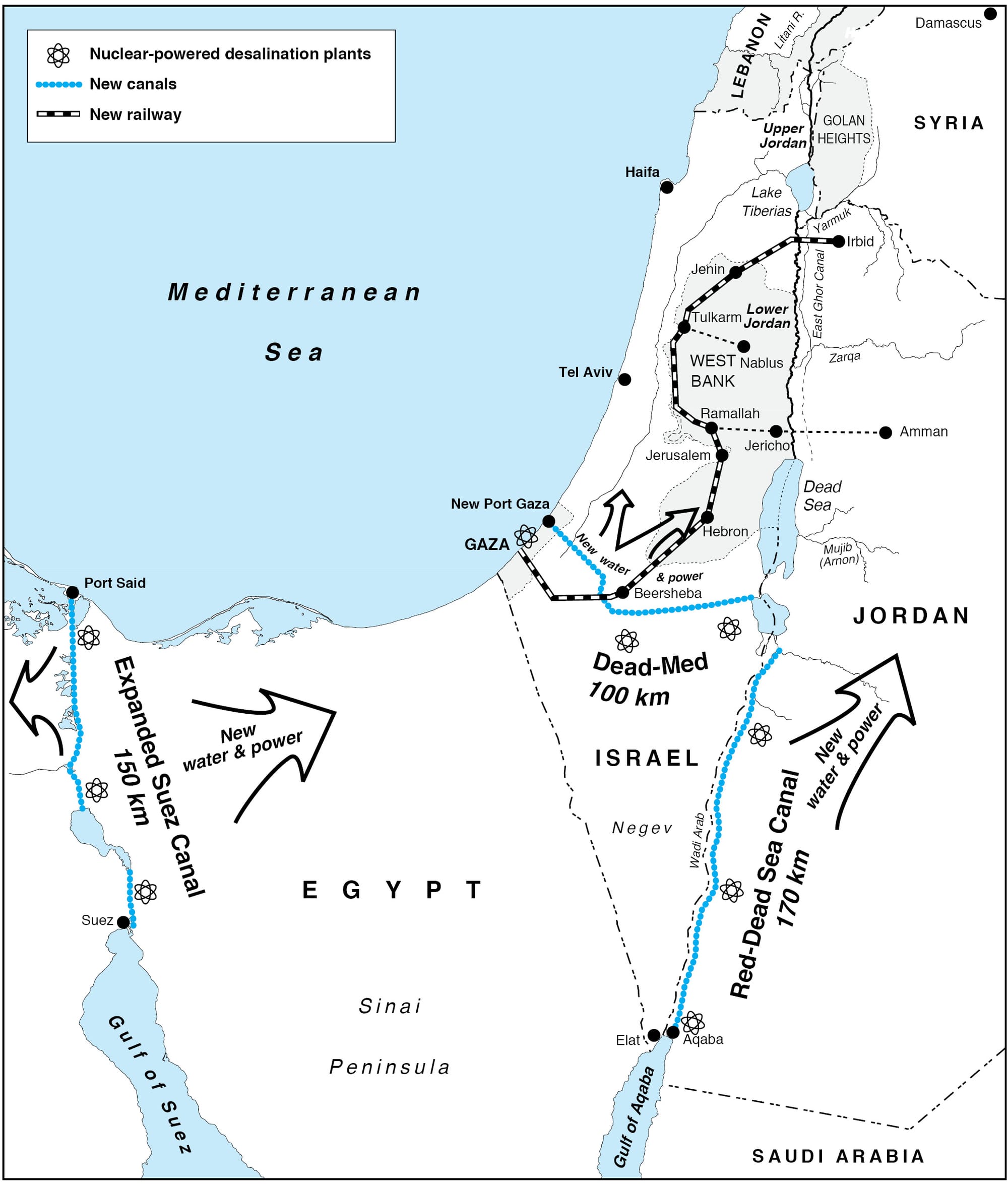
The UN Water Conference of March 2023 in New York acknowledged the growing tensions in the water sector and called for greater cooperation between states. Management of water passageways (rivers, canals, etc.), management of water tables and aquifers, irrigation techniques, desalination, wastewater treatment, exploitation of glacial resources (icebergs, etc.), cloud seeding: all of this is water, on a global scale. In many ways, that’s what we’re going to talk about here.
Water management—as I have shown, using the decisive case of the Middle East to launch the debate—is a political, economic, and social issue, and ultimately a vital one, which must be managed for the public good and in the general interest, recognizing the right of every country in the world to technological progress and development. The Global South is calling for this, and it’s up to our European countries to respond and rediscover their raison d’être.
Karel Vereycken:
The Ancient Science of Oases

Geo-economic expert Karel Vereycken presented the “Science of Oases,” with examples from the Indus Valley and Persian Qanats. Archaeological sites testifying to agricultural activity can be found in the Indus Valley and in the “Fertile Crescent” stretching from Egypt via Mesopotamia to Sumer. The earliest irrigation techniques involved capturing rainwater and transporting it to the land to be irrigated.
In the Indus Valley, the case of Mehrgarh (Pakistani Baluchistan) is particularly interesting. Traces of reservoirs and rudimentary drainage canals have been found here dating back to 7,000 BC, attesting to an already highly advanced form of agriculture. Later, this knowledge led to the construction of great cities such as Harappa and, above all, Mohenjo Daro, a city of 40,000 inhabitants with a public bath at its center, rather than a royal palace or a religious temple. No fewer than 700 brick wells, houses equipped with bathrooms and individual and collective latrines have been discovered here.
Many of the buildings in Mohenjo Daro had two or more floors. Water came down from cisterns installed on the roofs and was channeled through closed clay pipes that emptied into covered sewers under the street. To lift the water from where it would flow by gravity, man invented machines such as the chadouf, the “Persian wheel,” and then the “Archimedean screw.”

In, or even before, the Achaemenid era (500 BC), Persia introduced underground qanats or “drainage tunnels” to prevent rainwater from disappearing into the sands and instead carry it to areas where people decided to irrigate and live. Oases, symbols par excellence of desert zones, are not a natural phenomenon at all. Behind each one, a man-made qanat ensures what seems to us to be magic. In North Africa and other arid regions, urban expansion followed that of qanats. Iran boasts the highest number of qanats in the world, with approximately 50,000 qanats covering a total length of 360,000 km, about 9 times the circumference of the Earth! With high population concentrations and wells being dug indiscriminately without any overall plan, the old qanats, some of which are still functioning, are drying up and therefore doomed.
In fact, what the ancients learned was that hydraulic and sanitary problems can only be solved collectively. Their know-how passed on to the Minoan civilization in Crete and then to Greece, before being implemented on a large scale by Etruscan hydrologists in the service of the Romans. This know-how fell into oblivion with the collapse of the Roman Empire, before making a small comeback during the Renaissance. Responsible water management is therefore an old science. Are we old enough to make it work for everyone?
Jean-Marc Deplaix
The Importance of Navigable Canals
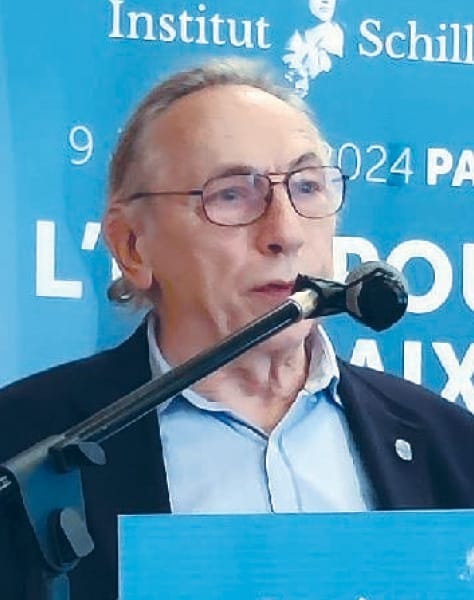
Jean-Marc Deplaix, a member of The World Association for Waterborne Transport Infrastructure (PIANC/AIPCN), stressed the importance of waterways for development and peace. “River navigation can only exist if there is peace, and if a peace agreement has been signed,” he said, giving the example of the agreement signed in 1804 for the creation of the Central Commission for Navigation on the Rhine.
Mr. Deplaix gave examples from China, showing how massive investment in their waterways, including the Three Gorges Dam, has led to a massive increase in traffic and economic growth. Investment has risen from 5.33 billion yuan in 1999 to 86.7 billion yuan in 2022. At the same time, overall traffic has risen from 739 million metric tons in 1999 to 4,402 million metric tons in 2022. And today, the amount of traffic which transits through the locks is so great that new, much larger locks are being built—doubling its capacity. The Yangtze basin accounts for 40% of China’s population, 46% of its GDP and 50% of its exports!
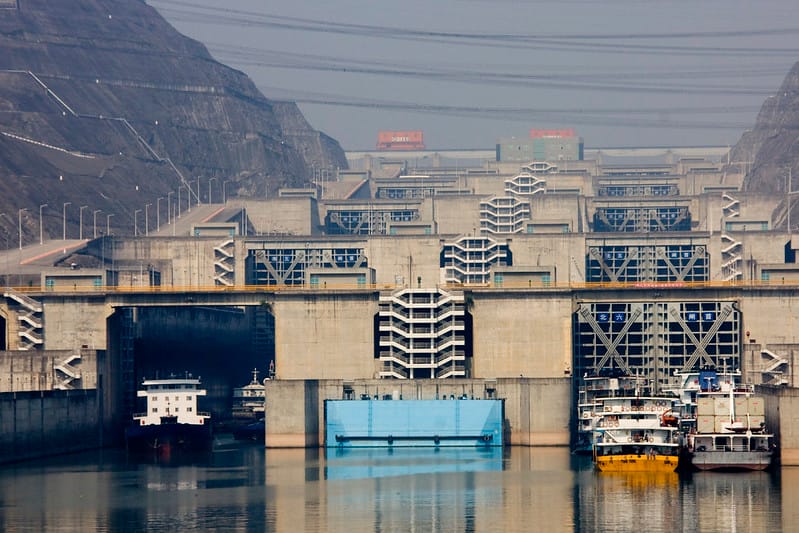
He also gave the example of the Qosh-Tepa canal in Afghanistan, the first 108 km of which has already been completed. Although designed as an irrigation canal, its size makes it more like a river, as it will be navigable by 3,000-metric ton ships. It’s a colossal undertaking: a 285-km canal, diverting water from the Amu Darya River, crossing 550,000 hectares of semi-desert which will someday be transformed into farmland! The canal is 100 m wide and 8 m deep, with a nominal flow rate of 668 m3 per second.
Brice Lalonde
Nature’s Challenge to Us
The former French Minister for the Environment (1988-1992), Brice Lalonde, gave a brief overview of the challenges he faced as Minister. On November 1, 1986, a gigantic fire ravaged a chemical plant in Basel, Switzerland. The fire was extinguished, but the toxic waste had contaminated the entire Rhine Valley, killing virtually all life in the river. The question then arose: “How can we bring the Rhine back to life?”
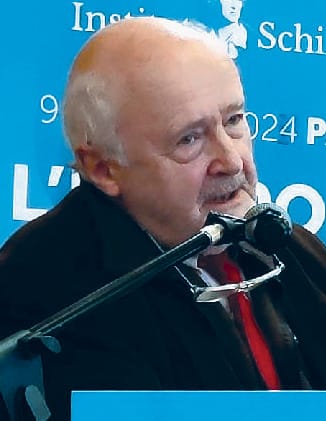
Mr. Lalonde reviewed the history of man’s creation of the modern-day Rhine River. Before man’s intervention, the Rhine Valley was more like a series of swamps, changing with the seasons; navigation was almost impossible.
It was at this time that one man, Johann Gottfried Tulla (1770-1828) [a German engineer from Baden, now part of Lower Saxony, Germany], set about straightening and thus shortening the Rhine by 80 km and rescuing 120 km2 of land from recurrent flooding. But, contrary to his predictions, the straightening of the Upper Rhine increased the speed of the current and even rendered some parts of the river unusable! To reverse the situation, France, in charge of the Rhine after the First World War, built the 50 km Grand Canal d’Alsace parallel to the Rhine, enabling navigation and power generation for the industrial centers of both countries.
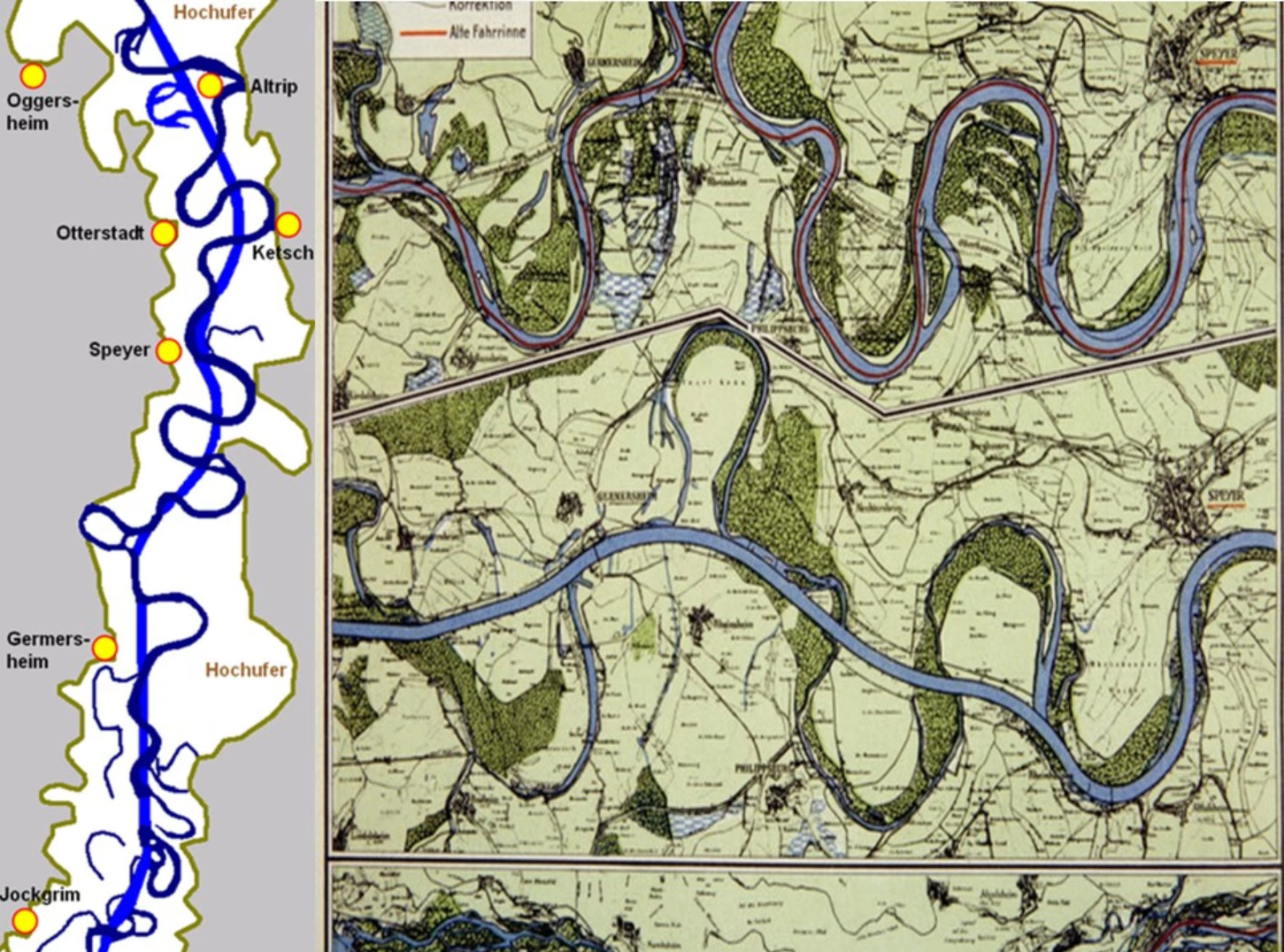
Since 1987, the members of the International Commission for the Protection of the Rhine (ICPR)—Switzerland, France, Germany, Luxembourg, the Netherlands, and the European Commission—have been cooperating successfully with Austria, Liechtenstein, and the Belgian region of Wallonia, as well as with Italy, to harmonize the many interests of use and protection in the Rhine region, to the benefit of all. So things aren’t always so simple: people can make mistakes, but they can also correct them.
Emmanuel Grenier
The Role of Dams in Economic Development
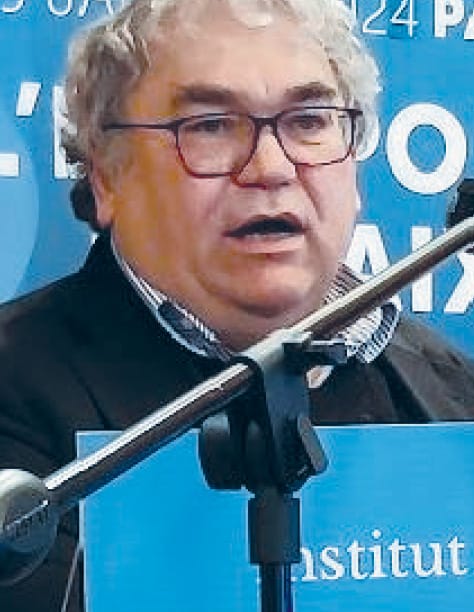
Emmanuel Grenier, in charge of public and institutional relations at the International Commission on Large Dams (ICOLD), spoke of the crucial economic and social role played by large dams worldwide. These include ensuring a reliable water supply for all, cheap electricity, flood control, and the development of tourism and aquaculture. And, of course, health! Let’s use the case of Japan, where there is a direct link between a reliable water supply, provided by the public sector, and health. Between 1870 and 1990, a sharp increase in the quantity of publicly supplied water in Japan led to a drastic drop in the number of patients suffering from infectious diseases, as well as infant mortality. The ICOLD also encourages the construction of dams in developing countries.
What do dams represent in today’s world? There are 60,000 large dams and one million small dams, with a total storage capacity of 4,000 km³. Founded in 1928, ICOLD is a professional organization. It has 106 member countries and 10,000 individual members, including design offices, builders, operators, scientists, researchers, engineers, academics, governments, financial institutions, and associations.
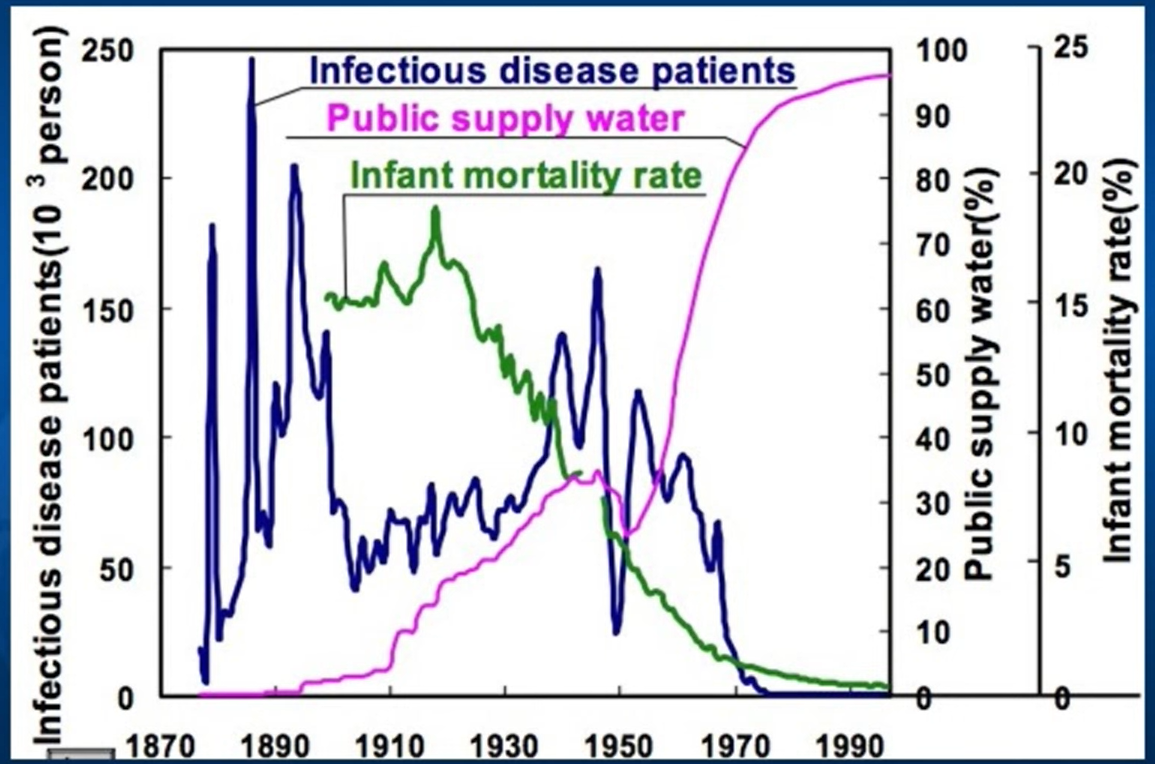
Its aim? To advance global knowledge in dam design, construction, operation, and safety. The ICOLD supports, validates, and disseminates innovations in the field of dams. It publishes construction rules and standards to ensure that dams are built with respect for safety, the environment, and other social and economic aspects. It is also a forum for the exchange of knowledge and experience, with 26 technical committees and 500 experts.
Bai Yungang
The Secrets of Xinjiang’s Agricultural Success Story
“Xinjiang is one of the regions with the most severe structural shortages of water and resources,” said Bai Yungang, an expert on water and Vice-President of the Xinjiang Academy of water sciences. Consequently, the development of an efficient agricultural water economy has become “an inevitable choice.”

China has been improving its irrigation techniques for several decades, Bai noted.
In the late 1970s, many districts introduced and promoted improved surface irrigation technologies…. At the same time, even more efficient and water-saving irrigation technologies, such as sprinkler irrigation and micro-irrigation (i.e., drip irrigation), were introduced. Finally, in the late 1980s, local technicians first proposed drip irrigation under plastic film, a technique known as “membrane irrigation,” which represented a major advance on traditional surface irrigation technology.
As a result, this enabled Xinjiang to produce 30% of China’s cotton with very little water. This same technique was then spread from a few crops like cotton, grapes, and fruit trees to almost all crops—specialized economic crops like peppers, tomatoes, potatoes, corn, sugar beets and melons for seeds, as well as cereal crops like wheat and rice.
Today, the irrigation water use coefficient has risen from 0.506 in 2018 to 0.573 by the end of 2022, further improving the efficiency of water resource use and alleviating the significant problems of conflicts between agricultural water and soil resources.
When fertilizers were then added to the advanced methods of irrigation, a mode of application for finely-tuned water and fertilizer management was created. “Compared to traditional technologies, this technology saves water and significantly increases yields,” Bai said.
SECOND SESSION
José Mulenda Zangela
A Major Project to Show the Face of Peace in Africa

José Mulenda Zangela, a writer, jurist, economist, and independent researcher, spoke next. For several years now, he has been fighting for the “Sula ya Amani” project (Swahili for “Face of Peace”). He discussed the injustices suffered by this region, from the death of rubber production in the 19th century and arms production during the 1st and 2nd World Wars, to the genocide of 1994.
Against this backdrop, CSP-REGLA (Comité de Soutien et de Plaidoyer pour la Région des Grands Lacs Africains)—the association of which Mulenda is President—is fighting for the development of the Great Lakes in the East African Rift Valley [touching on: Burundi, Democratic Republic of Congo (DRC), Ethiopia, Kenya, Malawi, Mozambique, Rwanda, Tanzania, Uganda, and Zambia] as a means to achieve peace, development and security in this substantial part of the African continent.
In a world where water is becoming increasingly scarce, Mulenda said that the Great Lakes of the East African Rift—Lake Victoria, Lake Albert, Lake Edward, Lake Kivu, Lake Tanganyika, Lake Rukwa, Lake Malawi, etc.—are among the largest bodies of fresh water in the world. As such, the development of this region represents enormous economic potential for fishing, transport, hydroelectricity, tourism, and agriculture—a fact of great significance given that its subsoil is very rich.

Connecting these lakes through man-made canals would be a fundamental step in unlocking the cultural and economic potential of this area, thereby opening up the prospect for regional economic integration and peace. According to experts, at one time these lakes had actually been connected to the Indian Ocean in a much larger body of water that reached inland.
This innovative infrastructure project would create ecological resilience and the basis for territorial planning, taking into account the urbanization and industrialization of the Democratic Republic of Congo. The Lukuga Canal would link this project to the Congo River via the Lualaba River from Lake Tanganyika.
The development and interconnection of these lakes—like Canada’s Great Lakes region extending through the St. Lawrence Seaway, or Europe’s Rhineland and Danube extending through the Rhine-Main-Danube Canal—would be vital for unlocking the economic potential of the whole of sub-Saharan Africa. In this context, the DRC is the lynchpin for the development of the entire region.
Karel Vereycken
Rebuilding Afghanistan and Developing the Nations of the Aral Sea Basin
Whatever one may think of the current regime in Kabul, Afghans today are fully determined to rebuild a country ravaged by 40 years of war and corruption. Karel Vereycken, geo-economic expert and member of the Schiller Institute, who visited the country in early November, discussed the 285 km Qosh Tepa canal project, a heroic effort by an entire nation to irrigate almost half a million hectares of farmland in order to double wheat production and become a grain-exporting country.

How has the world reacted? On Nov. 9, the Khaama Press News Agency reported that the Taliban’s Director of Media Monitoring of the Information and Culture Ministry, Abdul Haq Hamad, claimed that Pakistani authorities had asked Taliban officials to “cease operations on the Qosh Tepa Canal.” The Pakistani authorities were apparently concerned that “Afghanistan is gaining autonomy in the management of its waters thanks to this canal.”
In France, on Nov. 7, Le Figaro’s correspondent in Tashkent, Cédric Gras, accused the Taliban of digging “the canal of discord ... a gigantic irrigation canal ... to the detriment of downstream countries and the Aral Sea, whose water supply and agricultural crops are threatened.”
What’s really at stake? Yes, the new canal will capture part of the water from the Amu Darya River which, along with the Syr Darya River, no longer feeds the Aral Sea but the vast cotton-growing areas of Uzbekistan and Turkmenistan. The Aral Sea Basin captures the rainfall of five Central Asian countries: Kazakhstan, Kyrgyzstan, Tajikistan, Uzbekistan, and Turkmenistan. The forgotten country, Afghanistan, is geologically part of the same basin yet has been left out of the equation for decades. These countries are linked by the fact that the Aral Sea basin is an “endorheic basin,” where all water resources end up underground or in a sort of inland sea with no outlet to the oceans.
Faced with a relatively finite resource, concerted action is essential. Under the Soviets, a quota system was adopted, setting a percentage of total water for each country. But the “upstream” countries (Kyrgyzstan and Tajikistan, which derive 90% of their electricity from the abundant water from snow melt that powers the turbines in their dams) are reluctant to release their water in spring and summer, when the neighboring “downstream” countries (Uzbekistan and Turkmenistan) need it to irrigate their crops. To compensate for their losses during these seasons, the USSR offered them the equivalent in energy (oil). For want of a better solution, this system was maintained after the collapse of the USSR. By including energy in the water-sharing equation, Central Asia has, so far, managed to avoid water-related conflicts.
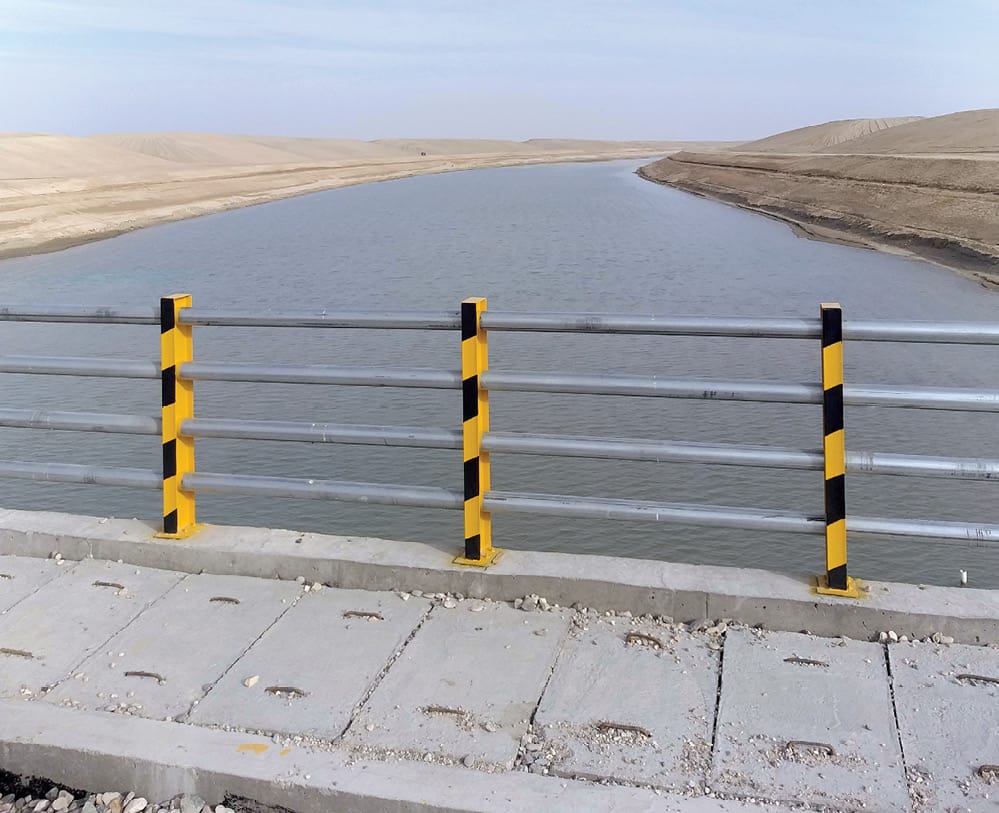
Today, Afghanistan, which has a legitimate right to benefit from the water it supplies to the Amu Darya, is not declaring war over a fixed resource, but entering a process of mutual sharing. This new situation requires all Central Asian countries to invest in their hydroelectric structures and, above all, to adopt more efficient, less water-consuming irrigation techniques, such as those presented by Bai Yungang in the previous round table.
Pierre Berthelot
The Mutual Development of the Fertile Crescent
Dr. Pierre Berthelot, Associate Researcher at IPSE, member of the Académie de l’Eau and director of the journal Orients Stratégiques, discussed the prospects of the Fertile Crescent Project. The project aims to maximize the region’s water resources and economic development projects, benefitting a region whose populations are growing rapidly and providing urban populations with water in sufficient quantity and quality.

Many of these countries are currently experiencing water shortages, which are also causing internal tensions. Dr. Berthelot spoke of cooperation projects launched in the past, but which were aborted—not for technical reasons, but often for political ones.
He referred in particular to the Peace Pipelines project undertaken by Türkiye in 1990/91. Türkiye, rich in water, offered its water to the countries of the region, in exchange for cheap energy—a plan which didn’t really work. Water transfers are widely criticized by experts, who say they shouldn’t be ruled out but that their high costs and ecological impact often make them unworkable.
We also need a zone of peace, Dr. Berthelot said, referencing the Oslo Accords, Egyptian President Anwar Sadat’s proposal at Camp David, and U.S. President Dwight Eisenhower’s proposal in 1950. All these projects were abandoned, not for technical but for political reasons. What are the difficulties of implementation today?

Dr. Berthelot cited the hydro-hegemonism of the two powers involved: Türkiye, which is in a hegemonic position because the waters of the Tigris and Euphrates Rivers rise in its mountains and it can turn off the tap at will; and Israel, whose various conquests have turned a downstream country into an upstream one.
To accomplish such a region-wide cooperation, relations between, in particular, these two states and their neighbors, as well as others in the region, would have to be calmed. However, current geopolitical tensions are preventing the establishment of the Fertile Crescent, and another concept is emerging on the ground—that of the “Shiite Crescent,” an Iranian zone of influence which could extend as far as Lebanon. This alliance, born of American intervention, must be broken.
Berthelot concluded:
If we want to realize this cooperation project, which is perfectly feasible from a technical point of view, it will only be possible through a reconciliation or a minimum agreement between the United States and Iran.
Alain Gachet
Water in Abundance
Dr. Alain Gachet, mining engineer and founder of RTI Exploration, emphasized in his presentation that science can provide solutions to real-world problems of water scarcity.
There’s a lot of talk about water at the moment, more than ever—but it’s talk about the surface water we see; I want to talk about the water we don’t see!
Twenty years ago, while studying the molecular structure of water, Dr. Gachet discovered an algorithm that revealed the vibratory dance of water under microwave excitation. He named this algorithm “Watex” (Water Exploration). Using this discovery, he was able to develop the ability—with microwave-emitting radar satellites at 800 km altitude—to hydraulically map entire countries.
Dr. Gachet, who is a former oilman, said he has also used this technology to draw up the maps needed to help oil drillers, as it is similar to petroleum geoscience. But in the case of water, it has enabled him to visualize in very concrete terms what NASA has been claiming for 30 years: that there is 100 times more water underground than all the lakes and rivers combined on the Earth’s surface! The implications of this are obvious: Water security and therefore food security for the world is possible, even at this perilous moment when traditional crops in almost every corner of the globe are now doomed by changing seasonal patterns of water availability.
If rain doesn’t arrive at the right time, the crops die. Therefore, we need to irrigate, Dr. Gachet said. Once these groundwater maps are captured, agricultural and industrial development master plans can be drawn up for all the governments and institutions that request them—as he had the honor of doing in Niger with President Mohamed Bazoum before the coup d’état in 2023.
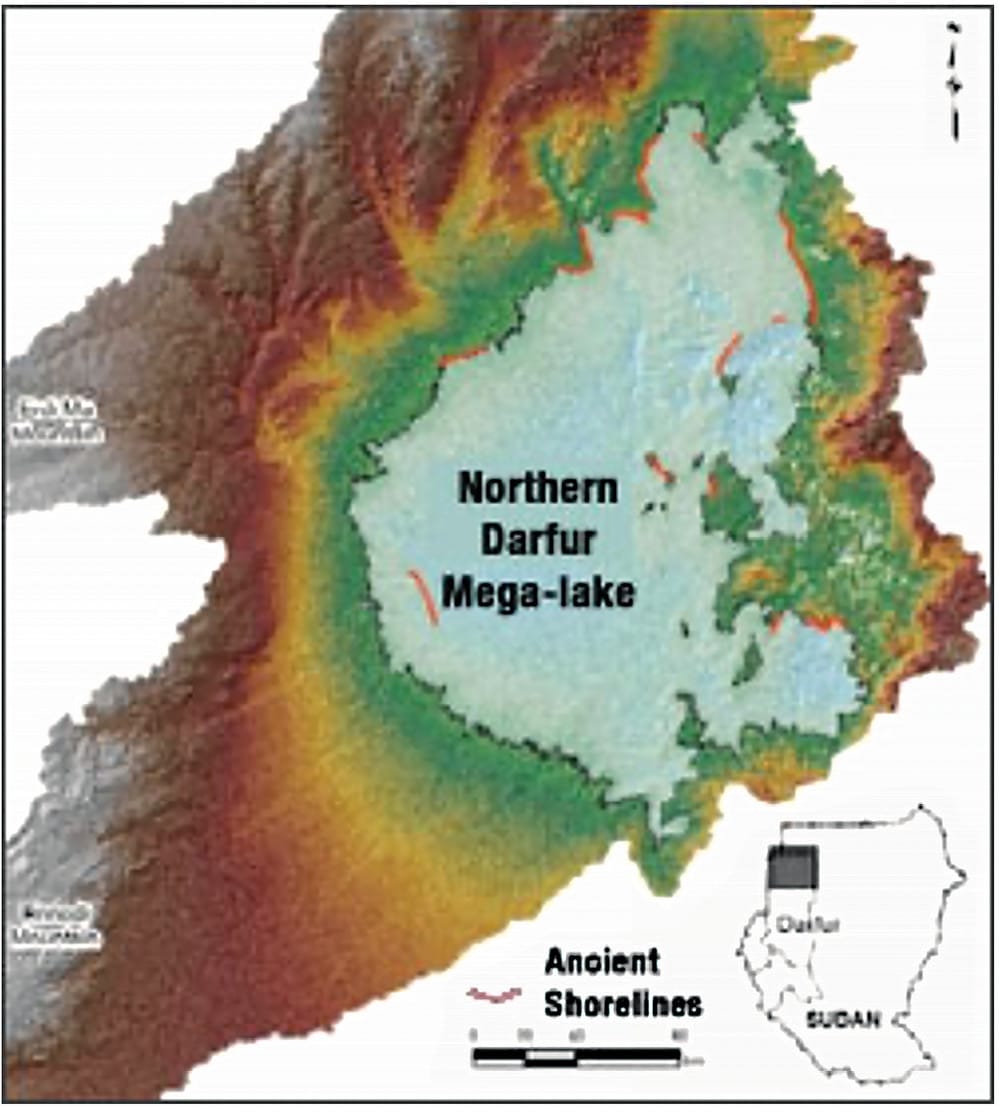
“If I had invented this algorithm sooner, the Darfur crisis would not have broken out,” he said. In 2004-2005, Gachet was called in to work on the water situation in the Darfur refugee camps. In Africa, as in the rest of the world, the worst tragedy of the 21st century is brewing. The UN officially is warning of “a hurricane of famines in the weeks and months ahead,” exacerbated by ongoing wars.
Europe hasn’t taken account of this drama, which has been brewing for 30 years, during which thousands of climate refugees have been flooding into Europe for almost 15 years now.
This is what outrages me. I’ve been personally mitigating this for 20 years by making water gush forth in the most hostile areas of the planet, for which I was honored by NASA in 2016. The task ahead is immense and urgent. So, let’s stop lamenting climate change and build a future together, because the solutions do exist.
Sébastien Drochon
Water, Energy, the Density Principle, and the Foundations of Physical Economics
Sébastien Drochon, head of scientific affairs at the Schiller Institute in France, presented some of the foundations and principles of physical economics as elaborated by the American economist Lyndon LaRouche, and related these reflections to the question of water in the human economy.
He elaborated on what it means to increase the carrying capacity of a given territory. Depending on the starting conditions offered by a given territory, how can we ensure access to decent housing, food, water, and basic economic and social infrastructure?
Drochon showed how this objective results in a simultaneous increase in population density, life expectancy, and average annual per capita energy consumption, among other things. He emphasized the importance of the latter, which for many may seem frightening or unnatural. In reality, however, the increase in annual energy consumption per capita is made possible by the labor savings accomplished in the production process, which in turn is made possible by successive leaps in technological progress involving an increase in the density of energy flows within production processes.
Drochon then asked:
If this principle applies to energy, how could it not apply to water consumption, which is intimately linked to energy? Shouldn’t we also be looking for an increase in average annual water consumption in our society, to ensure a healthy economy? This will be made possible by future technological and scientific advances, which will see water increasingly produced and generated directly by human action, rather than as a resource to be tapped. Whether we’re talking about the desalination of seawater or the detection of underground aquifers using the technology developed by Alain Gachet, this water will be the direct fruit of a greater capacity for work on the part of society as a whole. This will ensure real social and economic justice.
Drochon concluded his speech by emphasizing the need to establish a culture of progress that is genuinely human and aimed at the good of all, and offered two famous quotes. One from François Rabelais in Gargantua: “Science without conscience is but the ruin of the soul”; And another from Marie Curie: “In life, nothing is to be feared, everything is to be understood.”


